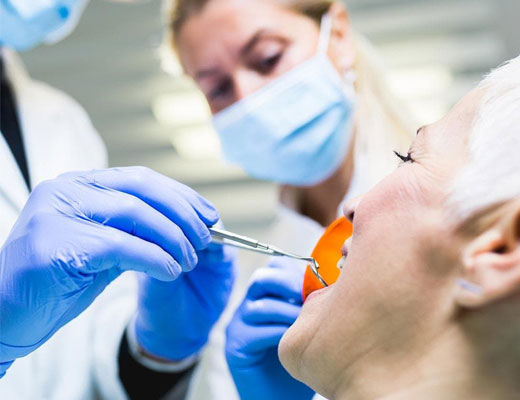Soft Tissue Management

While gingivitis is a condition that is faced by most people at some point in their lives, periodontal disease is a serious concern that happens when it goes untreated. This advanced gum disease represents a severe risk to the health of your gums and teeth, and it generally will not be eliminated without professional treatment. One approach to this is through the development of a soft tissue management (STM) plan aimed to manage and treat periodontal disease.
How Does Gingivitis Become Periodontal Disease?
Both gingivitis and periodontal disease share a common root, poor oral hygiene. These conditions can sometimes occur even in those who diligently care for their teeth due to other medical conditions.
The trouble starts when a bacterial film that is colorless and sticky, known as plaque, begins to form on the teeth. This can lead to the gums becoming irritated and inflamed and can cause them to pull away from the teeth. This separation causes pockets to form where the bacteria, debris, and plaque can all build up, getting the infection under the gum line.
When periodontal disease has been diagnosed by a member of our dental team, they’ll typically begin forming a soft tissue management (STM) plan to address the condition. The common components of these plans include:
- Dental Exam – This exam involves determining the overall health of your teeth and gums, as well as the depth of your gingival pockets. It’s at this point that the severity of your periodontal disease is determined.
- Scaling and Root Planing – This stage of the plan involves the elimination of the built-up tartar and plaque found both above and below the gum line. The roots are then polished to remove any rough spots where plaque can reform.
- Medicate and Irrigate – Once clear of plaque and tartar, the area will be cleaned out with water, known as irrigation, and medicated to prevent the reformation of bacteria. This aids in the healing of the gums.
- Ongoing Oral Hygiene – The final step of your STM plan is to develop and maintain meticulous oral hygiene practices at home. This is the only practice that lets you be certain that you won’t experience a recurrence of your periodontal disease.
In severe cases, there is another step for treating this condition. Patients who have particularly serious periodontal disease, or are prone to recurrence, may have it suggested that they participate in periodontal maintenance visits every three months. This will continue until the existing periodontal disease has been eliminated.
How Can Periodontal Disease Be Prevented
As the old chestnut goes, an ounce of prevention is better than a pound of cure, so our practitioners always advise taking steps to avoid developing periodontal disease. It starts with performing regular dental hygiene, including twice-daily brushing, mouthwash, and flossing. To ensure that gingivitis and periodontal disease don’t rear their ugly heads, add a twice-yearly visit to your dental professional at our clinic in Cheyenne, WY. With our assistance, you can win the battle against gum disease and keep your winning smile.



